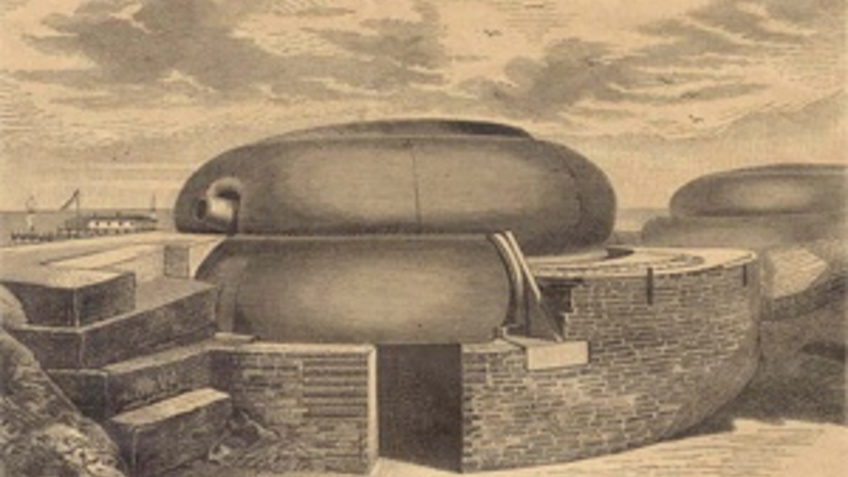Forts Brinkamahof I and II
The wars between the German states and Denmark (1848 to 1850 and 1864) raised questions on the coastal defence of the Weser estuary, especially, when under Prussian supervision, the North German Federation was formed in 1867. A short blockade by the French navy in the Franco-Prussian war of 1870 to 1871 was also seen as a threat. All these strategically significant events led to the subsequent construction of four forts in the Weser estuary. The left bank, territory of the Grand-Duchy of Oldenburg, was to be protected by the two forts Langlütjensand I and II (later abbreviation: Langlütjen I and II). Bremerhaven was to be defended by Brinkamahof I and II. The plans were drawn up in Berlin and reflected contemporary fortification technology, based in particular on Belgian fortresses.
Brinkamahof I was constructed from 1867 to 1872. Brinkamahof II followed from 1875 to 1881. These two fortresses were named after the Brinkama family (1831-1898), who once owned large estates in this area.
Both fortresses were used together with Langlütjen I and II as military installations until the end of World War I, but were never involved in combat action. After 1918, the allies ordered the decommissioning of all military facilities.
Brinkamahof I was demolished when the Bremerhaven port area was expanded around 1930. Brinkamahof II was used in World War II as an anti-aircraft position, but was blown up partly after 1945. The last remains were pulled down in 2000 to make way for the new container terminal CT IIIa.


